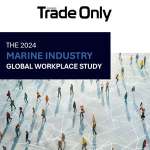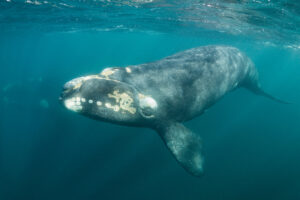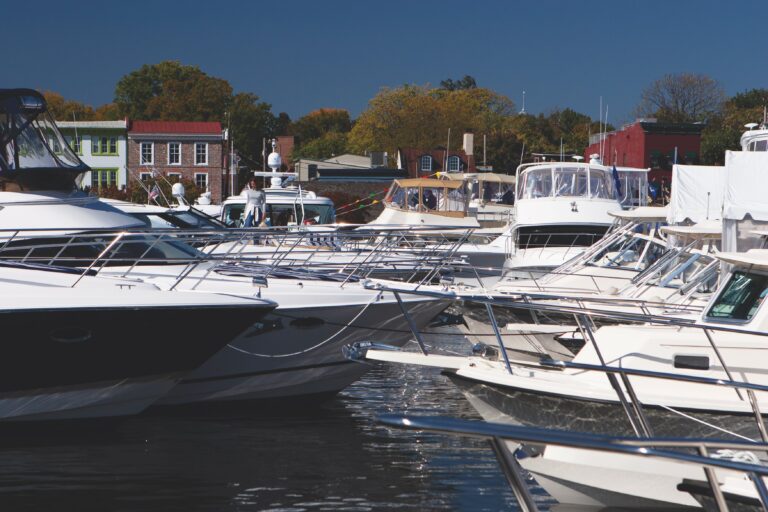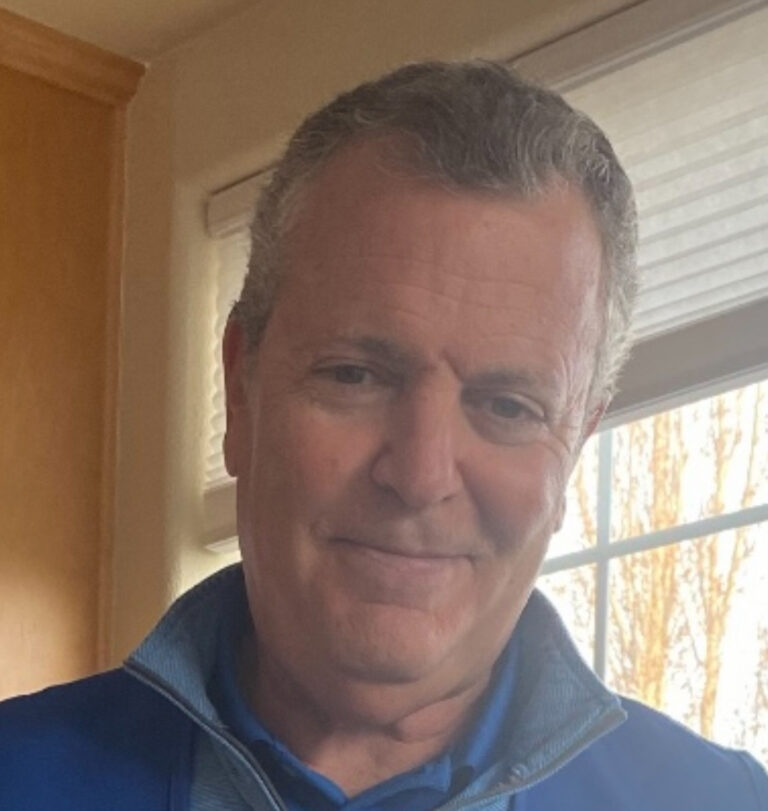
When Ken Seipel took the helm as CEO of West Marine in late 2018, the retailer was in the midst of declining sales and an identity crisis. His predecessor had attempted to transform the company from a marine retailer to one with a broader footprint, covering all aspects of life on the water. It was a strategy from which the new CEO is pivoting.
Along with last year’s return to the boat show circuit — West Marine had not exhibited under the former CEO for several years — Seipel led the company’s charge to get back to the core customer: the boater. “Everything that we do going forward will be focused on the boater,” he says. “We’ve lost some of our execution and discipline.”
Seipel’s prior retail experience is extensive, from his early days at JCPenney to leadership positions at Old Navy, Target and Gabe’s. He holds a bachelor’s degree in business management from the University of Wisconsin-Green Bay.
Seipel has served on numerous community boards, and he participates as a volunteer for the United Way, Salvation Army and youth athletics. He’s an avid outdoorsman and enjoys amateur photography.
Can you speak to three or four big things that West Marine has changed in the past year?
When I first came aboard, we introduced a back-to-the-basics strategy. That’s been a whole year’s journey around getting us recentered back to the core of our business, which is boating. For a while, we kind of extended ourselves beyond the boating market.
Along with that, the very specific things that we attacked are, first and foremost, stabilizing our team. We had a little turnover in our merchant level and wanted to make sure that we had good merchants in place, which I’m very proud to say we do. Beyond that, we also really worked to improve the customer value proposition. I put out a mantra for our teams to overdeliver on value. This means sharpening up price points and improving our in-stock of products.
What has surprised you most?
It seems like every single day, there’s a surprise. The biggest by far has been for the company really needing to do a great job at building an infrastructure. I was surprised at how limited the infrastructure was for the company to really replicate itself and be successful down the road, and frankly to drive costs out of the system so we can offer products at a much better price. The company had been very successful but had done so without great infrastructure.
Does building infrastructure mean bringing store product back to the basics?
That’s part of it, but the bigger part is what I call operational excellence, which is really, from the very beginning, the planning of inventory and understanding how to move that product through the supply chain and get it on the shelf for the consumer. We’ve been a little bit slow; we need to be faster there. It’s literally all the details behind the scenes that make a retail company work.

What categories have you increased and what has decreased?
We have substantial increases in the last year in maintenance, fishing, all of our safety categories, commissioning-type products and engines — basically, core boating needs. Where we’ve decreased a little bit hase been around the fringes, some of the paddleboards and SUPs, beachwear. I’ve asked our merchants to be really clear: The product in our store has to have an exact application to boating. And if it doesn’t, we’ve been decreasing those categories.
That laser focus on boating is a real sea change from your predecessor’s vision, right?
That’s a good point. The last six or seven years has been about a strategy to expand around the water onto the beach, if you will. That strategy in itself helped the company broaden its horizons a bit, but unfortunately, they took their eye off the ball, which is the core business. They left boat shows, for example — should’ve never done that — and we’re back at the boat shows, and we’re much more active in the industry. So it’s a little bit about decreasing those fringe categories and growing our core boating categories.
Have you increased or reduced the number of West Marine vendors?
We have increased our vendor count on a whole. We’ve introduced a new program called strategic assortment planning. That opens the doors for vendors to come in. We haven’t decreased any of our core vendors — many of our same vendors are still with us — but what we’ve been able to do is offer a few new products. Take shoes, for example. We’ve added three new vendors with shoes and kept our same core business. When we find a vendor that has something fresh and new, we’ve invited them to be a part of the business.
Can you attribute sales gains to these adjustments?
There’s really two drivers that attribute to our gain in sales. I had the team go back and take a hard look at what are the top-selling SKUs, and we narrowed it down to a pretty small list of items. And we said no matter what, we’re always going to be in stock of that product. The second thing we did in a lot of our stores’ categories is put in everyday value pricing. I took them off of high-low pricing. When you come in to buy certain items to maintain your boat, they’re at an everyday price. They’re a really good value. Customers can count on that, and we have them in stock.
Is private labeling still a significant source of income?
It is. We still do a substantial percentage in private label. In fact, we just introduced three new private-label programs this spring. One of them is our new coolers. It’s a Yeti-type product with a West Marine brand and our price points. So we’re continuing to innovate in that area.
One change I made in private label — as opposed to saying that we always have to have private label — is that I wanted our teams to think that it has to have premium features at mid-tier pricing. What we’re doing is overdelivering on features. A few labels didn’t stand the test, so we got rid of them. Basically, when you see the West Marine brand on something going forward, I want you think about it as the highest quality you can get for that item at a reasonable price.

Does that approach cut your margins on those private-label items?
We’ve dropped a little bit of margin on some categories; we did that on purpose to get dialed in. Actually, what we’ve found is that by focusing our time and energy on features with our vendors, they’ve been able to step up and engineer quite a bit for us at really the same pricing. It’s been a good partnership.
Have you closed or opened any stores in the past 12 months?
We’ve had four stores that we’ve closed and moved to better locations. We are taking a look at what stores need to be infilled and what locations complement each other. We’ve identified five or six markets that we can do a lot more business in. So we’ll do a combination of expanding and relocating stores, and adding some as well.
In November, we opened our brand-new flagship store in Seattle. It’s a 26,000-square-foot, two-level store, our second largest in the chain next to our Fort Lauderdale store. It’s doing very well. We’ll have another one coming up sometime this summer in Marina del Rey, California, a superstore. After that we are looking at some continual growth.
What’s different about the flagship stores? Are they a template for things to come?
We’ve recognized that there are some locations that are premium boating areas. We’re in a perfect spot in Seattle, so we made the investment. What we’ve done is bring in our best-of-the-best assortments. For example, the electronics shop there is more than two times larger than in other stores. We have nav screens that sell for upward of $15,000 there; we would not do that in a normal store. We also put in a full rigging shop. Now we have the room to handle these projects. We just got through doing the full rerigging of the Seattle Space Needle.

Have tariffs had a big impact on your business and sales?
Initially, when they first came out, we felt some impact. We saw that some vendors wanted to pass along those costs. Frankly, we made the decision as a company that the retail market was not ready to absorb price increases. So we said we’re going to have to work this backward, and what’s happened as a result is a lot of our vendors have absorbed those costs or pushed them back. Over time, it’s had very little impact, although initially we felt it. To be honest with you, we’re having way more impact right now with the coronavirus.
How is the coronavirus impact worse?
Deliveries, supply chain. As you know, China is really locked up. Following up on Chinese New Year, they were off for a couple of weeks, and then the virus came in, so stuff that you’d normally expect coming in for peak season is still sitting on the dock. I’m a little bit nervous about that. Our vendors are staying close to it, but that’s going to have significant impact. I think it’s going to be OK, but it’s going to be right down to the wire to get this product through.
Have you brought in talent from other industries?
The West Marine team is really great. They’re experts, and they know what they’re doing, and I’m pleased to have that group. But what I realized is that there was some individual talent missing around retail. So I brought in someone who doesn’t have an extensive marine background, but a ton of sporting goods experience. They’ve been able to help us dial up our product value equation.
I’m also bringing in a new head of H.R. from the retail industry, to help us with our training. I want to get much more professional in the technical training process. You don’t need marine knowledge to do H.R. work, unlike the buying team, where I have the exact opposite point of view, where they need to be absolute experts in their product category. Most of our buyers are deep experts in the marine industry. I’ve been able to complement the two quite well.
We’ve heard West Marine is pressuring vendors to drop sales reps. Can you speak to this?
The manufacturing rep works for the vendor, so we don’t have direct control on that, as that’s their relationship. Where we are putting pressure is on our vendors to sharpen up the cost of their product. We think there’s some inefficiencies in the supply chain. What I want to do is get lower cost of product and pass that on to the consumer with better pricing. What we found is that while doing that in some cases, the manufacturing reps provide an invaluable service to us. And in others, it was hard to figure out what value was being brought to the table, so we asked the vendors to make the right decision. If they believe it’s a needed part of their business, then we’re fine. But we’re going to ask them to be sharp on their cost pricing.

How are competing online sales affecting business?
We all have to recognize that Amazon is out there. They put pressure on us more than anything in terms of speed and convenience. What it’s done for us is made us go back and take a hard look at our supply chain and figure out how fast we can get product from our warehouse to the consumer. We’ll be rolling out some programs this spring where we’re going to utilize our hubs to be ready to implement next-day service. If you were talking to me a year ago, I’d say we’re at seven days. So we’re literally going to kick six days out of the supply chain.
On top of that, they’ve got a handful of items that we cross over with. It’s a small amount, but where they are, they’re pretty sharp on price. So what I decided to do is to take the very best West Marine price we could put in place because we add so much more to the equation than they possibly can. We have a location where the customer can easily do returns; we have experts in the store where you can get your questions answered. We’re truly an interactive place for the boating community. Amazon may have a price or two sharper, but I guarantee our overall value equation will be way stronger than theirs.
How have the changes we’ve spoken about affected sales?
I can’t give you an exact number, but we were in mid-single-digit growth all of last year, and that seems to be continuing. It’s been a while since the company has been in a growth pattern. We’ve got about 14 months under our belt of consecutive same-store sales increases. We had some pressure with the shorter holiday period.
We had this idea in our marketing: What do boaters do in the wintertime? They dream about boating. They can’t boat, so let’s see what we can do to get them excited about it. Categories like electronics and different gift-giving took center stage, and the customer reacted quite nicely.
Did you see softer sales in the spring due to the weather?
If I go back over the calendar, particularly in the North and Northeast areas, for the months of March and April and into early May, we were disappointed. We had a really slow start. There was flooding and cold weather, ice. It really wasn’t into Memorial Day that our North business really rebounded. The Fourth of July week, which is our peak week, we had our largest sales week in the history of the company.
What is the forecast for this year?
I just finished putting together a three-year strategy for the company. I’ve been told that it’s the first time the company has had one. Back to focusing on the basics. This year, the one thing I want to see happening is a transition from being a regular retail store into being a product center. We’re the only people in the industry with the footprint to bring it all together. You hear a lot of people talking about omnichannel; what that means for us is a little bit different.
Our stores are marine product centers, so you can order online, get professional services or buy the product yourself. We find a lot of our customers go back and forth between DIY and hiring a contractor depending on the complexity of the project. We are going to bring all of that together in a fast and efficient environment. We’ve already identified 25 stores where we’re going to do that. Our early results look really positive. It’s the one thing we do that nobody else can: We have the scale and the expertise.
This article originally appeared in the April 2020 issue.











